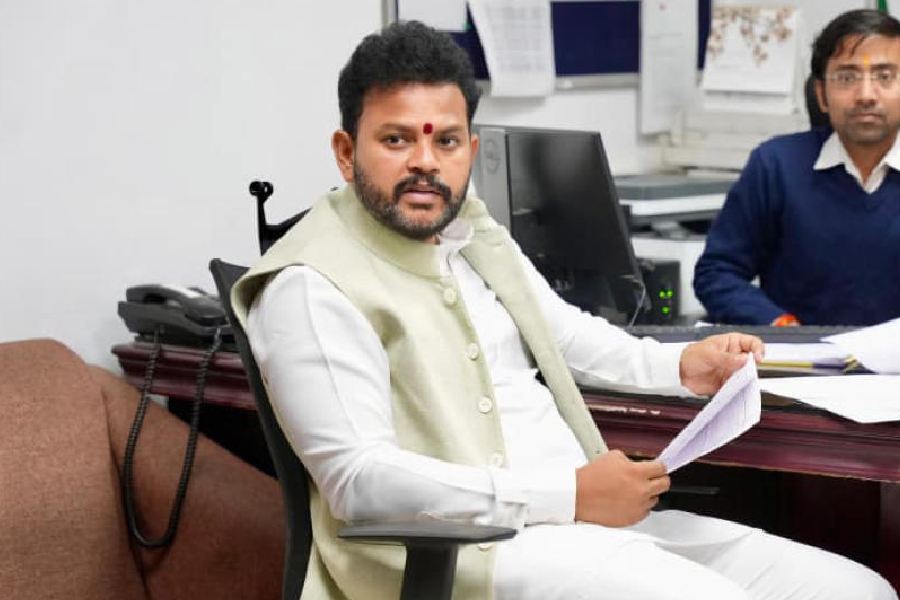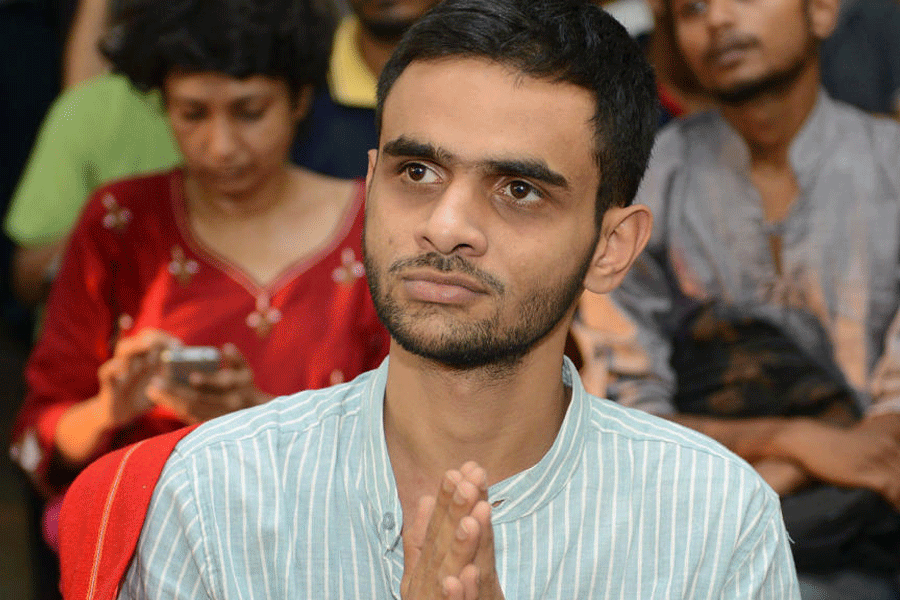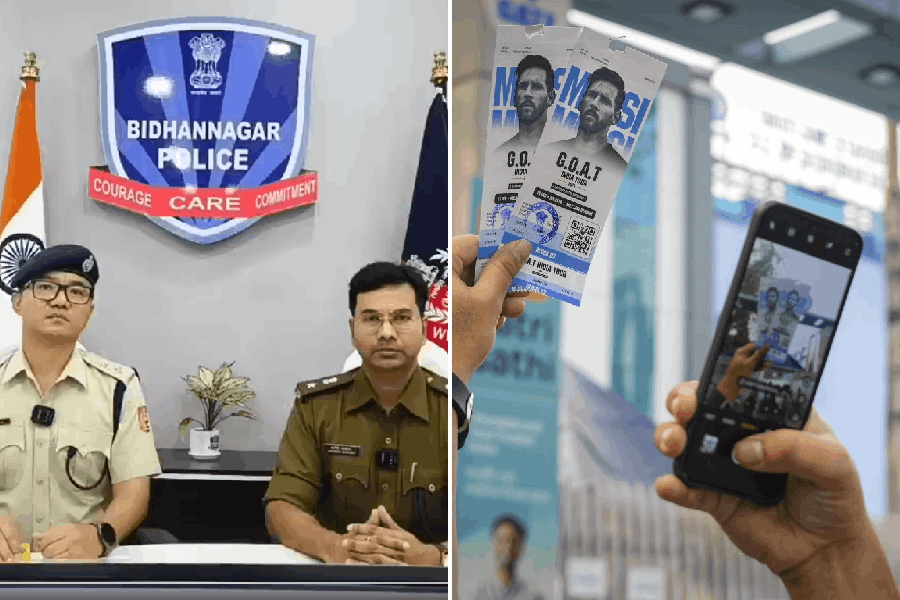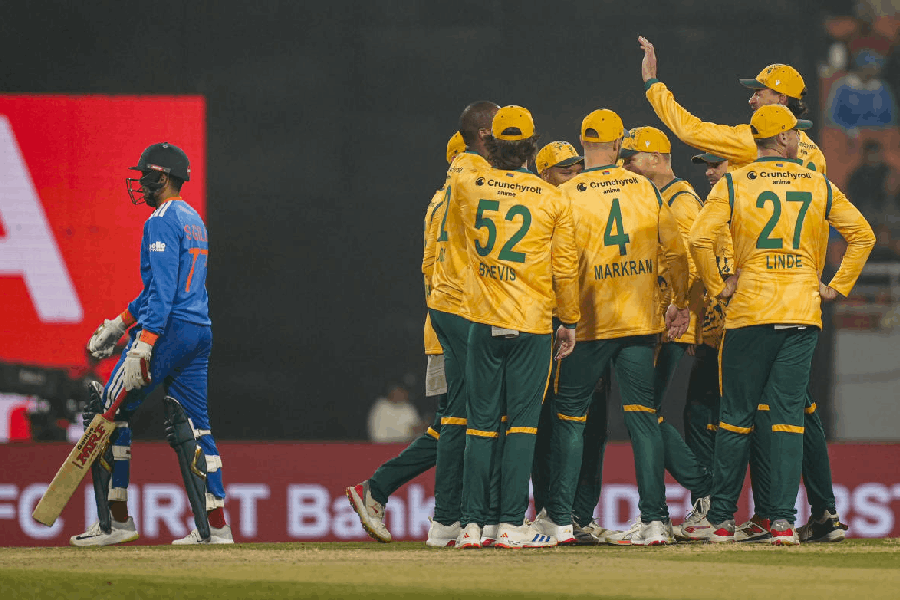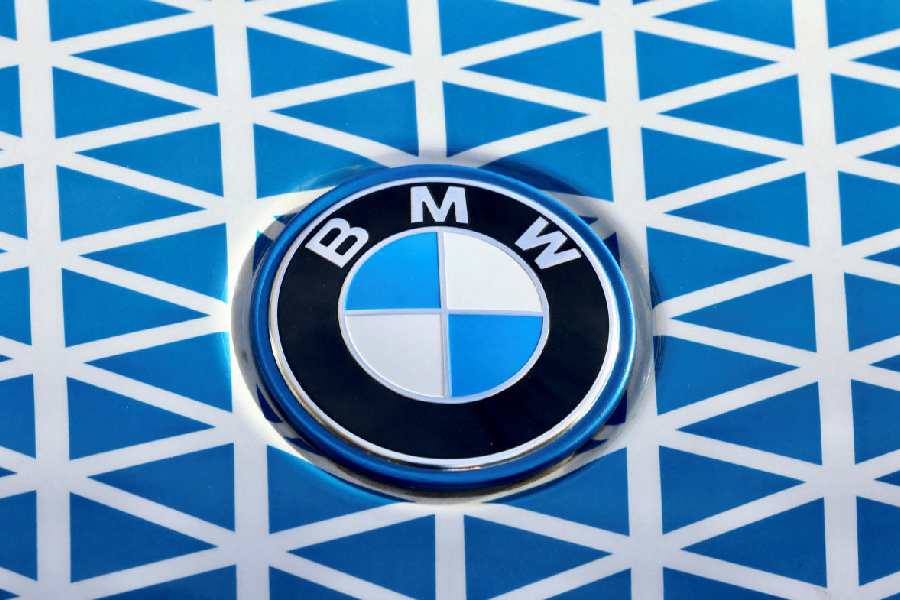 |
| The muddy waters of the Ganga at Simaria, where the centuries-old fair is held. Picture by Ashok Sinha |
Simaria (Begusarai), Nov. 26: What’s not for fit for earthly consumption is good enough to be offered for divine blessings.
Devotees at the month-long Kalpvas mela — a centuries-old religious congregation that is on till Wednesday — are for the first time boiling Ganga water for drinking.
“The Ganga is no longer safe and hygienic. So the devotees are drinking boiled river water on our advice. Experts have warned us against the high level of pollution in the river,” said Ramsreshtha Jha, general secretary of the Simaria Ghat Mela Committee.
Many devotees at the ghat in Begusarai district, 110km northeast of Patna, told The Telegraph that they, for the first time, were under “strict instructions” from the organisers to drink boiled river water only.
But does the “holy” water lose its divinity if boiled? Chairman of the Bihar Religious Trust Board Kishore Kunal doesn’t think so. “Technically, there is no objection to the devotees drinking boiled water for health and hygiene reasons,” he said. “The water is boiled with the help of a fire, which in our Vedas is the Agni Devata.”
Kunal, a former IPS officer, was, however, quick to add that only “pure water” taken from the river should be used for performing puja.
“I am sure the devotees are not using boiled water for ritualistic ablutions,” he said.
Religious leaders at the mela did appear a tad embarrassed when asked how the river water, which is not fit for consumption by humans, could be used in prayers to the gods and goddesses. “See, our faith (Hinduism) is not rigid. The faithful have been given the liberty to adjust to the emerging conditions. That is the secret for the survival of Hinduism for so long,” Kunal countered.
If anything, the drinking of boiled river water is a stark reminder of the fact that India’s holiest and largest stream that passes through 11 states and has an estimated 2.9 billion litres of human sewage discharged in it has turned polluted.
The fair attracts devotees from as far as Bhutan and Nepal besides Uttar Pradesh, Odisha, Punjab and various parts of Bihar. A big controversy dogged the mela last year with a sadhu, Swami Chidatman, undergoing a fast — backed by the BJP and some local entrepreneurs — demanding upgrading of the site to that of the venues for the Kumbh mela which is organised only at Prayag, Haridwar, Ujjain and Nasik.
Kunal and the mela management officials quoted sources from the Puranas and the sastras to establish that the Simaria Ghat mela has been in vogue for the last 1,500 years. Local residents recalled how the first Prime Minister, Jawaharlal Nehru, had visited the fair after inaugurating the bridge on the Ganga from Mokama to Simaria Ghat in 1959.
Religious lore has it that Raja Janaka, king of Janakpur and father of Sita, had undergone penance at the site attaining liberation from the curse of Parikshita and earning the title of Videh.
Rama’s Ganga has turned maili where his father-in-law underwent the great penance.


